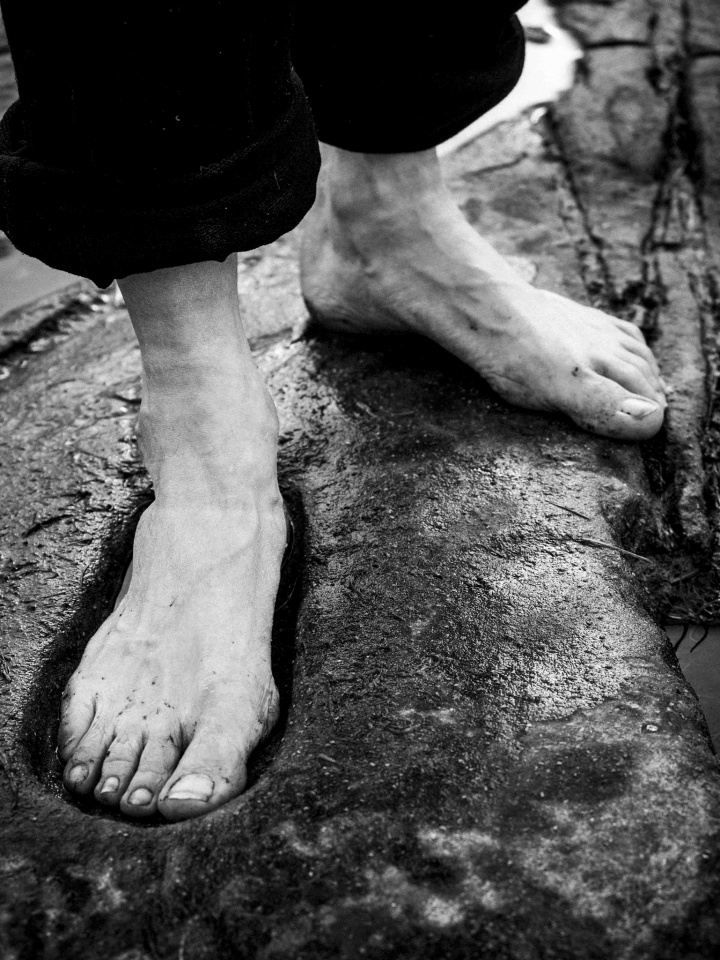footprint of fealty
Yes, we did come here to walk the Crinan Canal, but this part of Argyll has so much more to see! One of the top places on our list was Kilmartin Glen, where 800 ancient monuments including henges, cairns, prehistoric carvings, standing stones, forts and Celtic crosses jostle for space within a 6-mile radius of the village. I was keen to climb Dunadd Fort, a rocky outcrop rising 176 ft above the Mòine Mhòr ("great moss" in Gaelic). Originally occupied in the Iron Age, the fort later became the seat of the kings of Dál Riata. A stone at the top is thought to have played a part in their coronation ritual (not to be confused with the so-called "Stone of Destiny", which was apparently also up here at some stage in its peripatetic life). In a semi-pagan ceremony, would-be Scottish kings had to place one foot in the stone "footprint of fealty"to activate their kingship. This act symbolised the king's marriage to the land, energising the soil so that harvests would be plentiful and the people successful in war.
An article in the Herald some years ago reported that since 50,000 visitors a year came to Dunadd and many stuck their feet in the footprint (usually with shoes on), they had placed a fibreglass replica on top of the real thing to protect it. I don't know if that's true - the stone certainly looked and felt real - but at least it's still up on top of the hill and not down in Westminster..


Comments
Sign in or get an account to comment.


